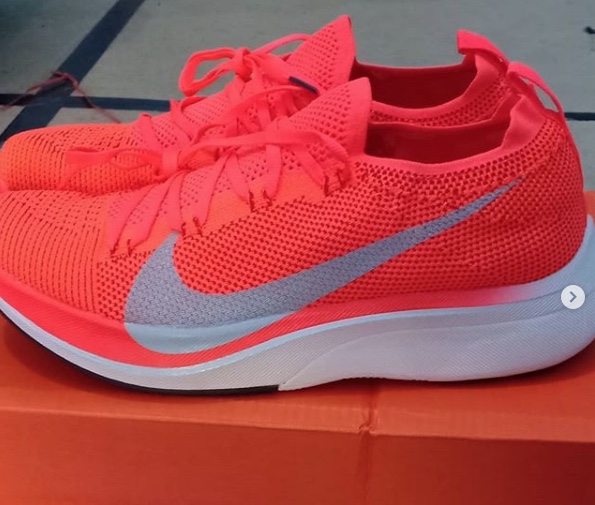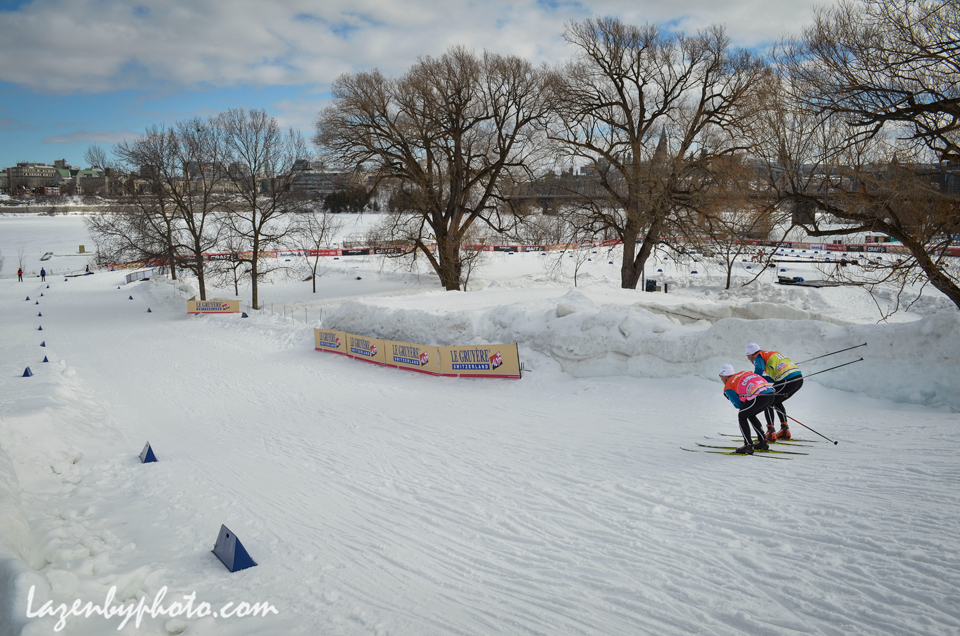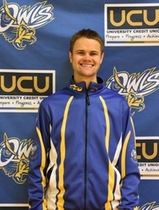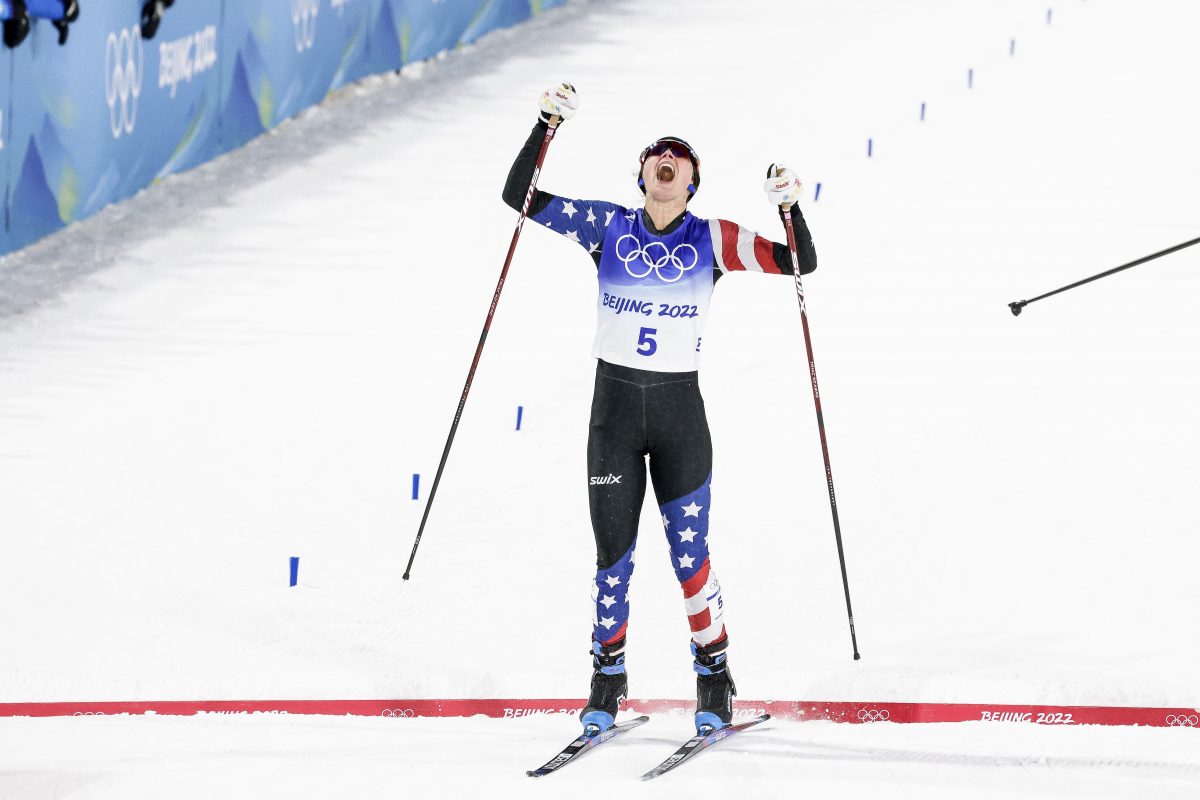
(The following op-ed is an opinion piece submitted by an author unassociated with FasterSkier. Viewpoints do not necessarily reflect that of FasterSkier’s staff or sponsors. We fully support open dialogue and encourage the use of the comments section at the bottom of this page to express varying views. To submit an op-ed, email info@fasterskier.com.)
About the author: Ryan Sederquist is the University of Maine at Presque Isle Head Nordic Ski Coach and is a competitive runner. This op-ed is also the opinion of Sederquist and not the University of Maine at Presque Isle.
“It’s a shoe,” Huddle says. “I don’t want to take away from what the athlete is doing. I wouldn’t say that Shalane [Flanagan] didn’t win New York if she didn’t wear Vaporflys because she’s an amazing athlete. I’m not really in the lab…I think if it’s really gonna be like the wetsuits in swimming, it’s either going to be something everyone starts making or it’ll be wiped out of the sport. So I think we’re still kind of in that tipping point to see which way it goes.”
“I coach Parker Stinson [who runs for Saucony],” says Brad Hudson. “He’s pissed about it every day, trust me. They’re working on their own [shoe], trust me! He lost to [Nike athlete] Chris Derrick by two seconds in the US Half [Marathon Championships]. Okay, he outkicked Parker. Parker’s like, my shoe’s like a moccasin. He’s not making fun of Saucony — Saucony, they make good stuff.”

These two quotes show a stark contrast of viewpoints over the controversy surrounding Nike’s Vaporfly 4%, a shoe whose prototypes were worn by all three medalists in the men’s marathon at the Rio Olympic Games in 2016. The Vaporfly 4% was also part of Eliud Kipchoge’s “Breaking 2” effort and his world record 2:01:39 hours in Berlin this year. And looking back at the winner of each Marathon Major in the past two years, yes, lots of Vaporfly 4% use.
The patented carbon fiber plate, which supposedly acts as a spring, reducing effort as it propels runners forward, has led to an arm’s race amongst shoe companies, and in turn infecting the confidence of some runners in the process. From fringe Boston Marathon Qualifiers to the Olympic Trial’s favorites, no longer is the sport the raw equalizer it once was. Now, one is left to doubt whether or not they are on equal footing (pun intended) with their competitors and are truly giving themselves the best chance to win, or if by putting on a shoe, they could shave off precious seconds.
Hopefully, you are starting to see a connection to our beloved sport of nordic skiing. If not, I’d encourage you to think critically as you read this, thoughtfully considering why our sport struggles to connect with a wider audience by failing to provide an accessible and equal playing field to all. You see, unfortunately, whereas running has now been presented with the “4% advantage” dilemma, I would argue that faster, better skis which are only worn by those on the World Cup (or by someone knows someone who races on the World Cup), as well as astronomically priced waxes, have created something Nike would, if packaged into a squeaky “sneaker,” so to speak, probably promote as the “15% Vaporfly.”
While running and cross-country skiing have commonalities, from the types and distances of races to the personalities and preferences of athletes who participate in them, there are obvious differences. In order to be a great runner, you need a great aerobic engine, a high running economy, and above average mental strength.
Success in nordic skiing requires this too, plus a focus on two additional complex elements: ski technique and ski science. Ski science, in this case, refers to ski construction and ski preparation, two topics which I know, by lumping them together, will have experts in those respective fields going crazy, but for simplicity’s sake, we will divide the triarchy into those three things – physiology/psychology, ski specific skill and technique, and ski science.
It is the mastery of this three pronged beast that I believe makes nordic skiing challenging, rewarding, and almost addicting. Running is boring, comparatively speaking (this is coming from a guy who runs between 70-90 miles per week for the entire year, so take that for what it is worth), partially because it is so simple. Run hard, run fast, recover, eat,repeat. Yes, doing things like striders, drills, hill sprints, and plyometrics can certainly help you become a more biomechanically efficient runner. But let’s face it: most of those drills were created by a junior high coach who was struggling to convince kids that running was more than just running.
At the end of the day, running is about getting from point A to point B faster than your opponent.
That is the goal for skiing, too. But reflecting on the triarchy, there are many things you can improve and enhance to maximize your chances in cross-country ski racing. You can work on specific techniques, agility, balance, going up hills, down hills, cornering. You have poles, making the activity a full body coordination which engages the upper body in a much more substantial manner than the arm swing of running. There are even two distinct disciplines – when you have had enough classic skiing, you can switch to skate. It is this combination of fitness, strength, and skill that makes going out for a ski each day a lot less mundane than the grueling regimen of a true distance runner.
The complexity really only begins there. However, as the other major member of the triad, which you could refer to as the “nordic nerd” subject – the wax science and equipment management aspect – requires you to become a different type of ‘student of the sport,’ and should be ignored at your own peril.
Actually, it can’t be ignored at all; it is so critical, people have centered their entire careers focused on its development, research, production, and application. The wax chemistry element of waxing is something I believe is very unique and fascinating about the sport. Not only are skiers in competition to gain an advantage in fitness. They also are trying to figure out an advantage in technique. And finally, they are trying to win the war in the wax room.
I love it. But I hate it.
What makes running so great as a competitor and so easy to follow as a fan is the fact that we all are presumably on the same playing field. It is a raw sport. It is true. There is no question as to whether or not you or I are faster than Eliud Kipchoge. All you need to do is sign up for a race and put up a time (or hop on a treadmill and see how long you last at 4:35 mile pace … probably not 26.2 miles). We are on the same playing field so to speak. This gives fans an appreciation and attachment to the sport, to some degree.
While runners may not care if they can match up with Kipchoge, they still want to know if they can match up with the “best version of themselves.” That desire is what brings us to lifelong sports like this in the first place. We want to chase after that true success – what John Wooden calls, “The satisfaction of knowing you gave 100% effort to fulfill your potential to the fullest.” With running, there is nothing stopping that. We are completely exposed – everyone is – for what we are really made of, and that is because we are all on the same playing field.

Is that true in skiing?
At the local Turkey Trot, if I beat Joe-Bag-of-Donuts, I can rest assured that I had the better race on that day. If, at the New Year’s Eve 10k classic freestyle, he beats me by two minutes, it could have been because he nailed the wax (or just HAD access to the wax) and I didn’t, or because he simply owns a pair of $1,000 skis and $700 poles and I have wooden skis and bamboo poles given to me by Jackrabbit Johansen. While that is an extreme example, a more realistic one is what we see at competitive races such as the U.S. Championships.
Like skiing, the U.S. road running circuit (and track as well) is open to anyone. If I hit a qualifying marathon time of 2:19 hours, I can run in the Olympic Qualifying Marathon (a goal that is shared by many runners post-collegiately). These goals are chased by runners because it is another chance for them to continue pursuing true success through high expectations, diligent training, and becoming all they can be. If they only can put up a 2:25 hours, that is where they are. It’s black and white. They don’t have to wonder.
Let’s take a similar scenario in skiing. Suppose a master blaster desires to qualify for the U.S. Ski team. When he signs up for the men’s 30 k skate mass start distance final at Craftsbury, is he going up against athletes who have the same gear and wax as him? No.
Does that matter? I would say, probably, yes, very much. How much? I’m not sure. Is it how the sport should be? I’m unsure again.
I’m torn by how the elements of wax and ski quality are just “part of the game,” in the same way that defensive coordinators scheming to beat Drew Brees is just part of the NFL. It is cool that we can actually influence performance manipulating something that doesn’t involve blood, sweat, and tears, unless you count the blood from burning yourself on an iron, the sweat from endless scraping, and the tears from accidentally dumping out an entire fluorocarbon powder container onto the snow.
Wouldn’t it be better for our sport if there was a more standardized setting? If, for example, every ski was made “equally?” Is that even possible? Maybe not. As far as waxes go, why doesn’t a governing body just publish a list of waxes that can be used – in any condition – such as the more egalitarian Rocky Mountain Nordic waxing protocols. To summarize, the coaches have agreed to use three types of glide wax depending on the day’s temperature. In other words, teams are required to use the exact same glide wax. We already see this controlled environment in rollerski races when competitors are required to use the same brand of skis with the same speed wheels.
Don’t take this as me saying the best athletes in our country wouldn’t still be on top. But, it would provide a clearer way for us to see who actually is the fittest athlete and the best skier. The premium would be on those two prongs, as opposed to a third, which is only accessible by a few. One could argue that, whoever is at the top would garner even more respect from their peers, as there wouldn’t be the equipment/wax excuses for the others to fall back on.
It’s crazy to think how the running community has been up in arms over the 4% shoe. A shoe that costs $250. That’s nothing in the nordic ski world. But that is part of the problem – because of the premium on equipment and waxing, we’ve created a community where only a select portion of our society can become members. To me, that might be the only real issue here worth discussing. We should want nordic skiing to be something everyone has a CHANCE to be in.
Here is an even deeper thought: most skiers, like runners and cyclists and members of every other major endurance sport, champion clean sport. That is a noble fight.
Here’s a relevant thought experiment: what gives a skier a better relative advantage? Blood doping vs. clean training or World Cup level skis/grinds with pure flouro waxes vs. the same ski purchased at a retail store with CH waxes? In my opinion, the blood doping fight needs to be won. But maybe, if we want to see a revival of cross country skiing in our culture, a solution to the latter disparity should also be addressed.
Unfortunately, putting a halt to this at the professional level is probably not realistic at all. What about at developmental levels? Just recently, Norway banned the use of flouros at 16-under competitions.
In Norway, everyone skis – we all know that. A big reason is the extent to which the sport is woven into the fabric of the nation’s very culture and way of life. Another reason is the availability of equipment to kids. If you want to see what I mean, try going on the Facebook Marketplace of a skiklubb in Oslo or Lillehammer. The reason this country is good is because everyone skis, and the reason everyone skis is because it is accessible. The key thesis of this entire argument is to make the sport accessible to all. But, participation shouldn’t be the only thing that is accessible, the ability to win should be, too.
That was Molly Huddle before the 2018 NYC Marathon. I wonder how long it will be before you won’t be able to say that about a running race. Can you imagine if a skier on the World Cup said something similar about expensive waxes or hand-selected skis? It would be blasphemous.
In closing, I want to reiterate that the very thing I’m fighting against is something I’m actually really fascinated by and enjoy learning about. However, that is because of my position as a ski coach. I have access to different waxes, tools, and skis. I have the opportunity to work towards a mastery of all of those elements – a process which is challenging and enjoyable, albeit, still frustrating at times.
My “beef” with it has nothing to do with that – it has everything to do with its effect on the sport catching on with the next generation. When I look in our wax supply shelf and go through our inventory here at the University of Maine at Presque Isle, I can’t help but tear up and think about myself as an 8 year-old boy, bundled up and standing in the yard in northern Minnesota as my mom or dad took out the three frozen dials of Swix kick wax we owned. That was all I ever even saw.
Even as a skier training on my own just 18 months ago working as a full-time teacher – all I had in my toolbox, which was rededicated as a wax box, was CH 6 blue and CH 8 red glide wax. No LFs, HF’s, powders, or liquids. Two wax choices, one cork, one scraper, one brush, and an iron that Laura Ingalls Wilder probably used before it found its way to my family and eventually became dedicated to skis. I think there should be a place in our sport for people coming from that upbringing as well as the kids who are lucky enough to attend one of the many wonderful private schools we have in Colorado, Idaho, Vermont, and New Hampshire that allows kids access to great coaching, equipment, and time to focus on racing and development.
Skiing is an enjoyable activity and a vehicle for transforming lives through teamwork, competition, goals, and intense training. I want everyone to have the chance to choose to be a skier. Hopefully, we all do, and that is where I hope this discussion leads.
– Ryan Sederquist

Jason Albert
Jason lives in Bend, Ore., and can often be seen chasing his two boys around town. He’s a self-proclaimed audio geek. That all started back in the early 1990s when he convinced a naive public radio editor he should report a story from Alaska’s, Ruth Gorge. Now, Jason’s common companion is his field-recording gear.



